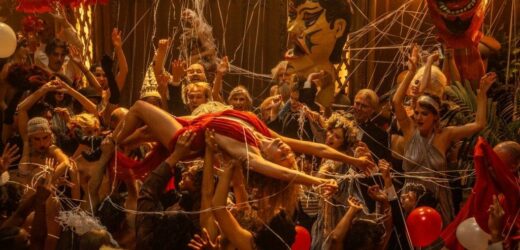When director Damien Chazelle and costume designer Mary Zophres were discussing the costumes of his epic “Babylon,” they wanted to steer clear of anything audiences had already seen in films that take place in the 1920s.
The world of “Babylon” is set in Hollywood as the silent film era comes to an end due to the advent of sound.
Zophres began to assemble photos, but nothing later than 1926. Sharing photos, listening to music and looking at paintings from the era gave her an overview of how she would approach her formal prep.
The task ahead was a mammoth one, which she calls the biggest challenge of her career. “Babylon” is teeming with fictional movie stars, producers and filmmakers and is toplined by Brad Pitt, Margot Robbie, Diego Clava, Jovan Adepo and Jean Smart.
Robbie’s character Nellie LaRoy was based on silent era star Clara Bow. For LaRoy’s first entrance in the film, Zophres decided it was the perfect opportunity to use red. “It’s power and seduction all in one. There’s a reason the red dress has this reputation that precedes itself,” Zophres says. But it isn’t just a red dress, it’s skimpy and revealing, and Zophres was conscious to not dress any other character in the scene in the same color.
The scene features a cast of hundreds, all dressed in their Roaring ’20s best. It’s the audience’s introduction to the world of “Babylon,” a lavish party with orgies, drugs and raucous entertainment. LaRoy stands out, and, as Zophres says, “red has an association with decadence.”
But before she even began putting the dress together, Zophres observed choreographer Mandy Moore working on the drug-fueled dance sequence. “There was a lot of dancing on furniture and [people] being carried [around] by others,” Zophres says.

She had an idea that Nellie would wear tap shorts. This supported the background story that she was a dancer in New York and this might have been something that she wore underneath one of her outfits and had stolen it. “To me, she cobbled that outfit together,” says Zophres, including a scarf and another piece “that she was going to tie as a sash.” The sash was made from vintage Chinese silk and the outfit allowed Robbie the freedom to slide on her knees, throw her legs up, and move as needed, which “would have been very difficult to do in a dress.”
As for the ultra-revealing aspect of the outfit, actors from that era were going through a seismic shift. “Art was changing drastically, and I liken that to what was happening in women’s fashion,” Zophres says. “Nellie was someone who would have seen her mother or grandmother in corsets, but young women in the 1920s weren’t wearing anything at all underneath. So there’s this liberating feeling. And skirts that grazed your ankles were now grazing your knees. It was groundbreaking.”
Women had fought and won the right to vote, and had gained other freedoms. The freedom of the clothes of the period “mimics the ideas in the film: If you keep somebody caged up long enough, they go bonkers,” says Zophres. She describes LaRoy as being “completely uninhibited, bold, audacious and a good dancer. … She is the epitome of somebody working her assets.”
The film, which she calls the hardest project she’s ever done, featured over 250 speaking parts, with LaRoy having between 20 and 30 changes. “It was incredibly creative and invigorating,” Zophres says.
Read More About:
Source: Read Full Article


